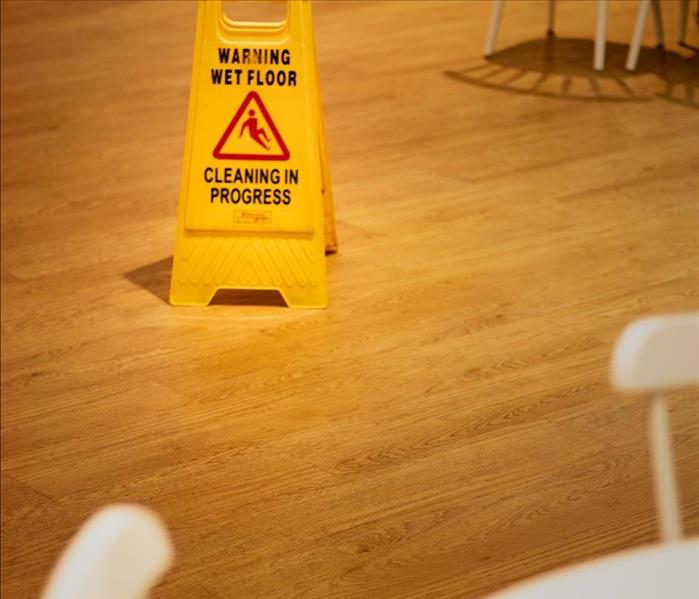Oh No! Water Damage and My Hardwood Floor
5/22/2020 (Permalink)
One of the most common calls our franchise receives is from customers in distress over a water loss event impacting their hardwood flooring. The #1 question they have is, “Can my floors be saved?” It is a well-known fact that water causes significant damage to hardwood flooring. Wood is hydroscopic, meaning it absorbs moisture from the air, and is subject to catastrophic damage if not dried quickly. Our customers have every right to be concerned, but the answer to the question as to whether the floors are salvageable is not a yes or no response, but depends on numerous variables that must be accessed by our ICRC certified technicians. These include:
- Category of water loss
- Class of water loss
- Amount of time flooring has been wet
- Type of hardwoods
Category of water loss simply defined relates to amount of contaminates in the water. A Category 1 water loss is indicative of clean water from a burst pipe. A Category 2 water loss contains significant levels of contaminates, such as an overflowed washing machine or dishwasher. A Category 3 water loss contains gross levels of contaminations including harmful pathogens and toxins and could be the result of sewage or a toilet back flow. A Category 1 water loss is the most likely category for hardwoods to be saved because the water is clean. A Category 3 water loss is not salvageable. However the amount of water impacting the floors, which is indicative of the Class of water loss, has a significant bearing on how much absorption of water the floors will take in and has a direct correlation to flooring damage.
There are 4 Classes of water loss. The greater the amount of water directly impacting the hardwoods the more likely it is for water to penetrate the joints and impact the sub floor. Once water is trapped in the flooring joints it would requires specialty drying equipment, making it a Class 4 water loss. SERVPRO of South Durham and Orange County has specialty drying systems to remove moisture trapped in the joints of hardwood flooring.
Time or Duration of Moisture is a huge factor in determining whether hardwood flooring can be saved. It is imperative to respond immediately. The longer the flooring stays in contact with the water the more damage it creates limiting the chances of saving the floors. Hardwood flooring that is mitigated within the first 24 hours has the greatest chance of being salvaged.
The Type of Hardwood Flooring is a critical factor as to whether the flooring can be saved. Real Hardwood flooring is made out of a single layer of wood, and is salvageable if mitigated in time and is not a Category 3. Although water in the subterranean layer will cause the ends to bow upwards a condition called cupping, the floors can be sanded down and refinished. Engineered hardwood flooring is made of multiple layers of wood going in different directions. The veneer finish cannot be sanded and refinished. Often when engineered floors are impacted with moisture the expansion of the wood will result in a cracked finish or the popping up of the wood because it expands in all directions. With these conditions present, the engineered hardwood flooring cannot be saved.
Regardless of whether the floors can be saved or have to removed, SERVPRO of South Durham and Orange County can help clients through the mitigation and the restoration process, making it "Like it never even happened."





 24/7 Emergency Service
24/7 Emergency Service
